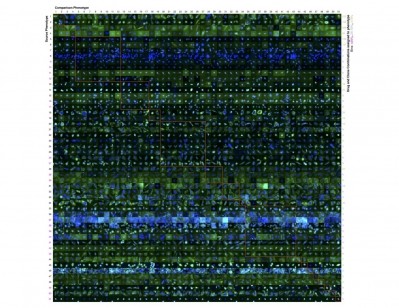These are the leads you're looking for: LIGHTSABR could slash discovery costs

Scientists at The Scripps Research Institute (TSRI) have created a new screening system component that could make the platforms “orders of magnitude” smaller and cheaper.
“Most drug discovery occurs in robotic screening centers that use expensive and difficult-to-maintain compound libraries,” said Brian M. Paegel, an associate professor at TSRI and the study’s principal investigator.
Often, the robotics involved can cost millions of dollars to establish and the compound libraries limited to a fixed collection of around 500,000 entities.
“Our technology has the ability to democratize high-throughput screening, much as technology miniaturization has now moved genome sequencing into the hands of the many,” expalined Paegel. “In principle, this type of technology can recapitulate many of the functions of a typical high-throughput screening center.”
The new approach uses microfluidic droplets and integrated microfluidic circuitry to automate screening. According to Paegel, bead-based compound libraries are prepared by "split-and-pool" combinatorial chemistry, which is capable of synthesizing million-compound libraries “on the fly for several hundred dollars.”
The device, named LIGHTSABR (Light-Induced and Graduated High-Throughput Screening After Bead Release), was developed using a variety of recent engineering advances in microfabrication and droplet microfluidics.
According to Paegel, the most difficult part of the process was accurately delivering defined UV illumination intensity to a specific region of the circuit. “This involved implementing careful calibration experiments and the incorporation of sunscreen to block stray UV light,” he explained.
How does it work?
A microfluidic circuit loads beads into microscopic water droplets in oil. Then, the beads are loaded with a compound attached to the bead surface using a photosensitive linker.
“When the bead-containing droplets travel through a UV illumination region, the light cleaves the compound from the bead, allowing it to diffuse around the droplet,” explained Paegel.
The droplet contains a biochemical experiment that measures the enzyme activity associated with HIV-1 replication.
“If the compound inhibits the enzyme's function, the enzyme does not process indicator molecules and the droplet is distinguishable from others in which the enzyme's function remains uninhibited,” added Paegel. “This difference in signal allows us to identify and isolate beads displaying potentially anti-viral compounds.”
Moving forward
The researchers plan on implementing DNA-encoded miniaturized compound bead libraries in the integrated microfluidic LIGHTSABR device to identify inhibitors of HIV-1 protease – “a front-line target of several FDA-approved highly active anti-retroviral therapies,” said Paegel.
They will initially work with other Scripps investigators, but are also pursuing options to spin out a start-up company to commercialize the technology.














